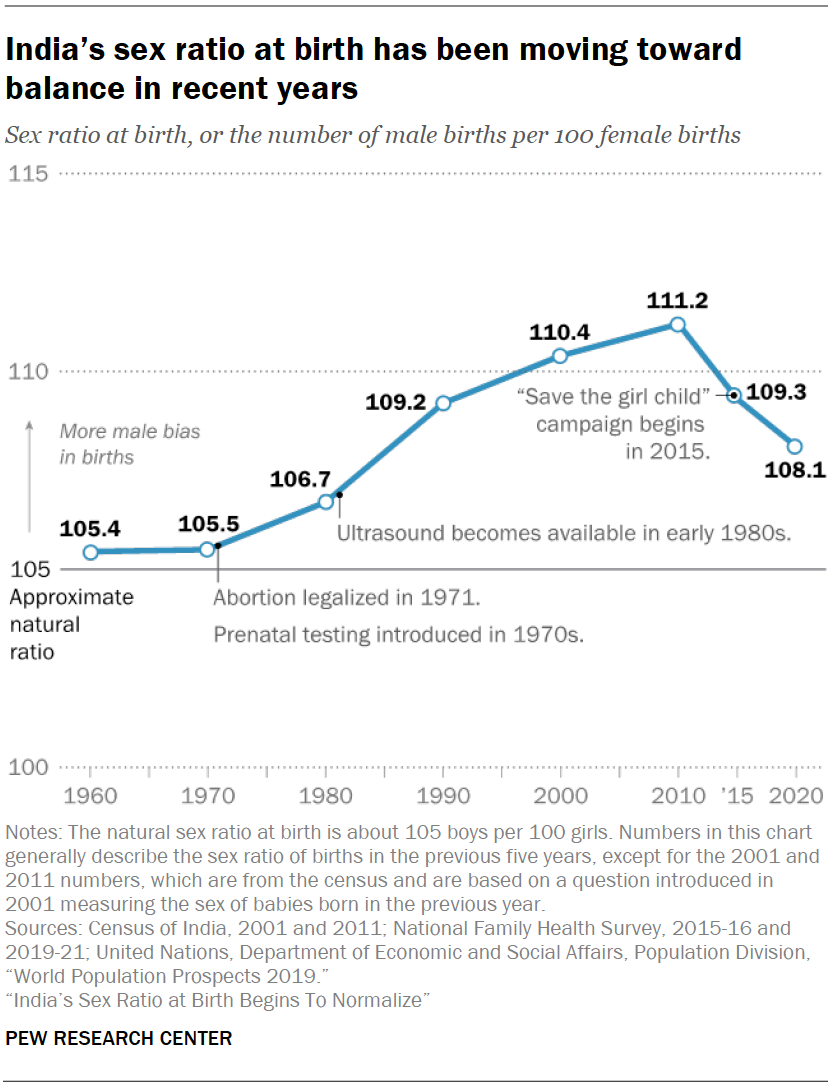ForumIAS announcing GS Foundation Program for UPSC CSE 2025-26 from 19 April. Click Here for more information.
ForumIAS Answer Writing Focus Group (AWFG) for Mains 2024 commencing from 24th June 2024. The Entrance Test for the program will be held on 28th April 2024 at 9 AM. To know more about the program visit: https://forumias.com/blog/awfg2024
Contents
Source: The post is based on the article “India’s sex ratio at birth normalises slightly” published in The Hindu on 24th August 2022.
What is the News?
Pew Research Center has released a report titled ‘India’s sex ratio at birth begin to normalise’.
What are the key findings of the report?

India’s Sex Ratio: The world over, boys modestly outnumber girls at birth, at a ratio of approximately 105 male babies for every 100 female babies.
That was the ratio in India in the 1950s and 1960s, before prenatal sex tests became available across the country.
Abortion was legalized in the country in 1971. However, once prenatal testing allowed Indian families to learn the sex of a fetus during pregnancy, sex selection took off.
After this, the sex ratio at birth widened rapidly from about 105 boys per 100 girls before 1970, to 108 boys per 100 girls in the early 1980s; it reached 110 in the 1990s.
Now the sex ratio at birth has normalised slightly over the last decade, narrowing to 108 boys born for every 100 girls in 2019-21.
Religion-wise Sex Ratio
Hindus: Hindus have a sex ratio of around 109 boys to 100 girls.
Sikhs: In the 2001 census, Sikhs had a sex ratio at birth of 130 males per 100 females, far exceeding that year’s national average of 110. By the 2011 census, the Sikh ratio had narrowed to 121 boys per 100 girls. According to the latest NFHS data, it now revolves around 110.
Christians and Muslims: Both Christians (105 boys to 100 girls) and Muslims (106 boys to 100 girls) have sex ratios close to the natural norm.
Missing Girls: The average annual number of baby girls “missing” in India fell from about 480,000 (4.8 lakh) in 2010 to 410,000 (4.1 lakh) in 2019. The “missing” here refers to how many more female births would have occurred during this time if there were no female-selective abortions.
| Read more: Reading sex ratio trends in NFHS-5 data |
What is the significance of this data?
This data suggests that Indian families are becoming less likely to use abortions to ensure the birth of sons rather than daughters.
This follows years of government efforts to curb sex selection – including a ban on prenatal sex tests and a massive advertising campaign urging parents to “save the girl child” – and coincides with broader social changes such as rising education and wealth.
| Must read: The implications of a skewed sex ratio for India |




